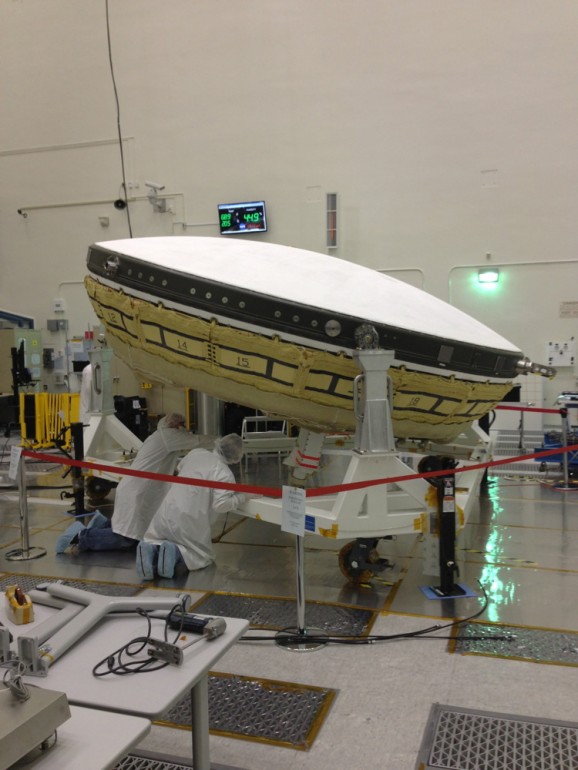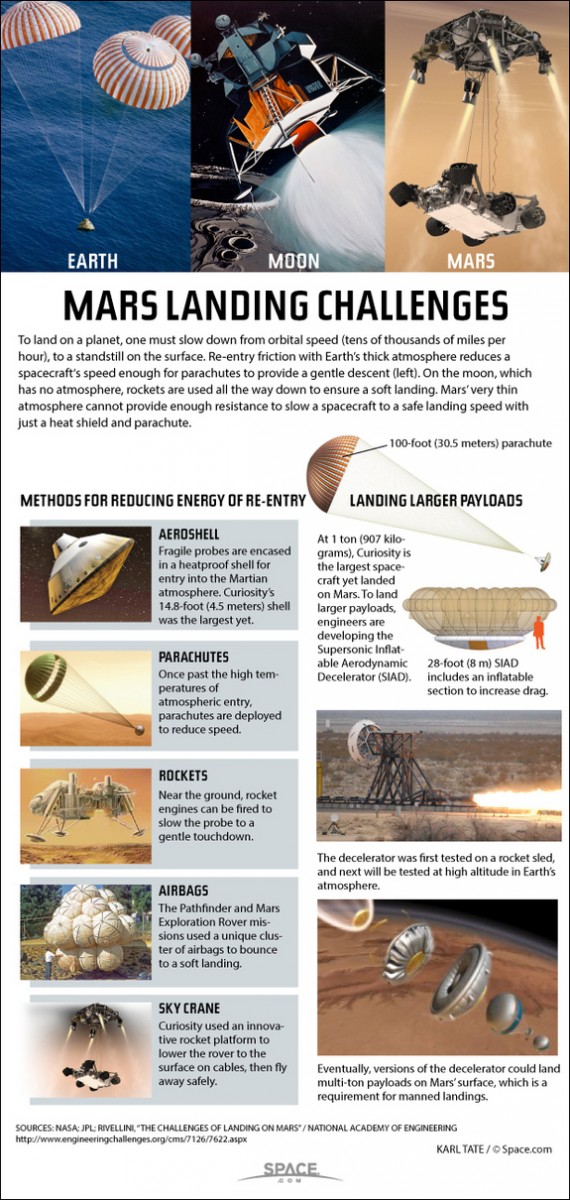NASA Builds Inflatable Saucers And Giant Parachutes For Mars Landings
This article is more than 2 years old
 The Opportunity and Curiosity rovers are triumphs for NASA, but why should the space agency rest on its laurels? Even though both rovers are rolling around on the Red Planet, NASA is hard at work on other vehicles for future Martian exploration, particularly spacecraft to deliver payloads. Their efforts are currently focused on supersonic parachutes and inflatable saucers to help slow and gently deposit cargo on the planet’s surface.
The Opportunity and Curiosity rovers are triumphs for NASA, but why should the space agency rest on its laurels? Even though both rovers are rolling around on the Red Planet, NASA is hard at work on other vehicles for future Martian exploration, particularly spacecraft to deliver payloads. Their efforts are currently focused on supersonic parachutes and inflatable saucers to help slow and gently deposit cargo on the planet’s surface.
The technologies are a part of the Low-Density Supersonic Decelerator (LDSD) project. As we continue to explore Mars, and other planets, we’ll need a way to transport larger loads. Spacecraft move at incredibly high speeds through the Martian atmosphere, so they need to decelerate quickly and safely, allow for a soft landing for whatever they’re carrying. Previous missions, such as the one that delivered Curiosity, have relied on the Viking parachute, which NASA has used since 1976. But a simple parachute doesn’t generate enough drag for the heavier equipment that future endeavors will need, especially if humans do try to colonize Mars.
 Mars’ atmosphere is approximately 1% as dense as ours, which means that a rocket probably can’t slow down a spacecraft enough, but there’s also not enough air to generate the same kind of friction as it would on Earth. This is why Curiosity’s landing seemed so daunting and used a sky crane to get it the last few meters. While successful, that landing pretty well exhausted the capabilities of such a system.
Mars’ atmosphere is approximately 1% as dense as ours, which means that a rocket probably can’t slow down a spacecraft enough, but there’s also not enough air to generate the same kind of friction as it would on Earth. This is why Curiosity’s landing seemed so daunting and used a sky crane to get it the last few meters. While successful, that landing pretty well exhausted the capabilities of such a system.
The new parachute is 100 feet wide, which means it’s far too big to be tested in a wind tunnel, which is how NASA conventionally proceeds. Now they’re attaching the chute to a rocket sled, which is a lot more difficult than it sounds. They’re also developing balloon or saucer-like decelerators called Supersonic Inflatable Aerodynamic Decelerators (SIADs) that, in tandem with the parachutes, would enable them to land of loads in up to a ton heavier than previous missions. However, a sky crane would probably still be required to help slow down that much mass to speeds that would afford a gentle landing.
 The first LDSD flight test will take place in June in Hawaii, with a couple more practice runs to follow next year. They’ll keep redesigning based on what these tests tell them, and this technology could start being used within the next ten years, perhaps for NASA’s 2020 rover mission to Mars.
The first LDSD flight test will take place in June in Hawaii, with a couple more practice runs to follow next year. They’ll keep redesigning based on what these tests tell them, and this technology could start being used within the next ten years, perhaps for NASA’s 2020 rover mission to Mars.












